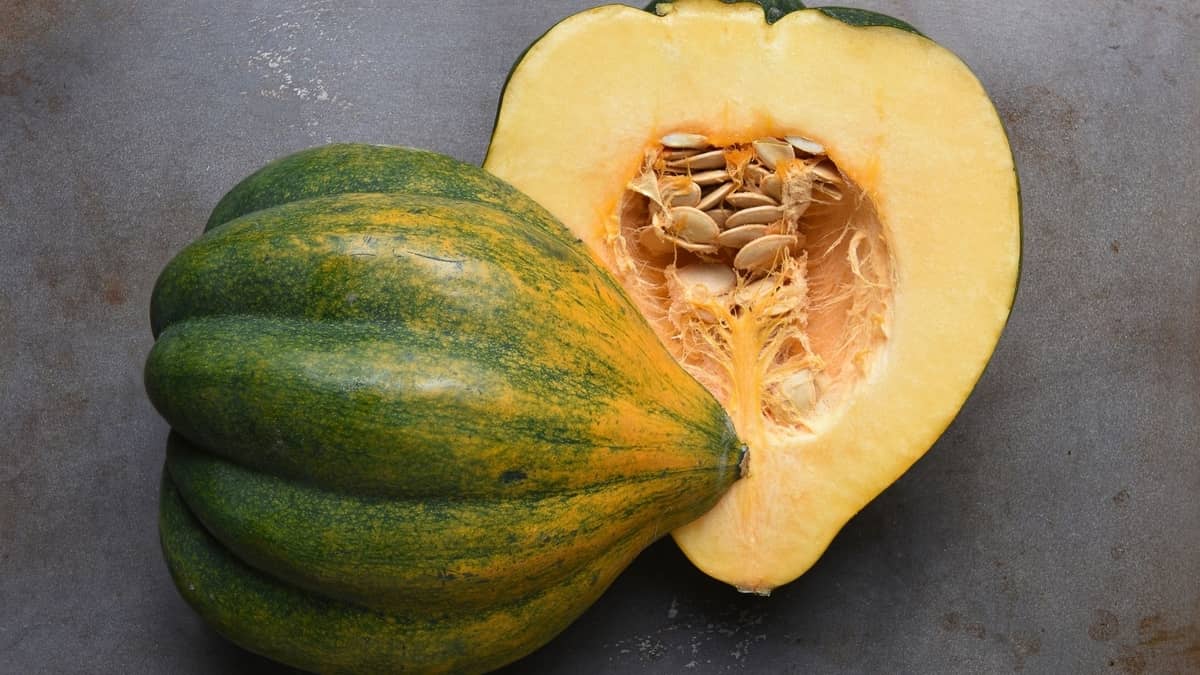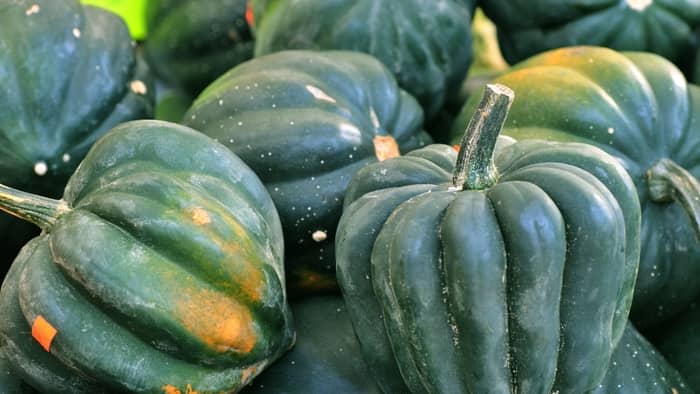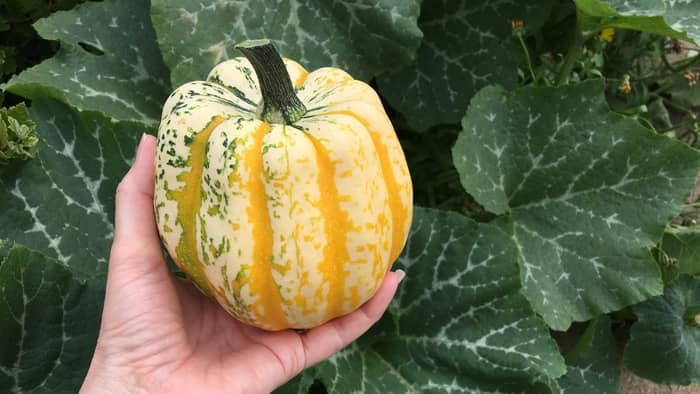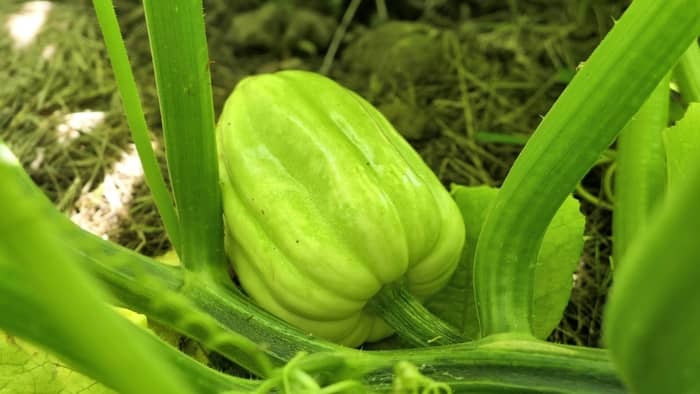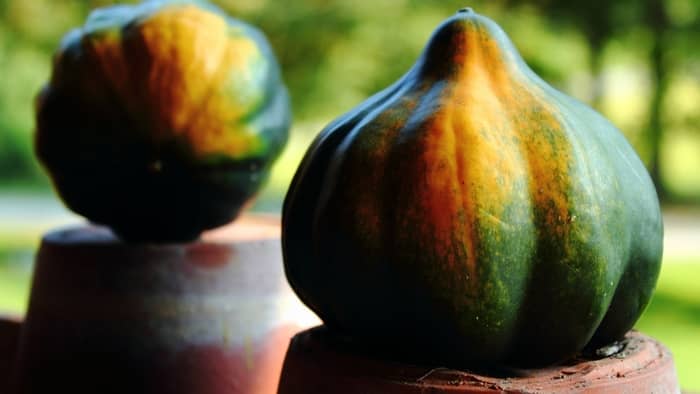Last Updated on November 8, 2021 by Guillermina
Tasty, sweet, and healthy, these are eleven tips and tricks for successfully growing acorn squash indoors.
Although botanically classified as a fruit, Acorn squash is considered a starchy vegetable. They’re grown everywhere, but mostly in North American gardens. If you take good care of them, they can be stored for up to several months.
Acorn Squash is full of nutrients and has a wide range of health benefits. It’s therefore advisable to include it in your weekly menu. Thinking of planting one? Well, that’s great!
Since not everyone has a garden, here are eleven tips and tricks for growing acorn squash indoors.
What Is Acorn Squash?
Acorn squash (Cucurbita pepo var. Turbinata) is a type of winter squash that is recognizable by its stout, round, and ridged shape. It is named after its unique shape that resembles an acorn.
The bark of the acorn squash plant is dark/deep green with bright orange and yellow patches. Did you know that mature acorn squash can weigh up to an amazing two pounds? As for its taste, it is very similar to kabocha squash.
The acorn squash plant is considered a winter squash because of its hard and thick skin that allows it to be stored for months after harvest (outside the refrigerator).
Health Benefits Of Acorn Squash
Due to its nutritional profile, this plant possesses a number of impressive health benefits. Some of them are:
- rich nutritional composition,
- a good source of antioxidants,
- promotes digestive health,
- protects against certain diseases (heart disease risk factors, atherosclerosis, neurodegenerative diseases, diabetes, and certain cancers).
Can You Grow Acorn Squash Indoors?
If you don’t have the garden space for acorn squash plants, don’t worry because you can grow them indoors. Here are our eleven tips for your amazing harvest.
Choose The Right Container
When it comes to roots, Acorn squash develops shallow, far-flung roots. Which means it will need a lot of space to grow and develop. Therefore, choose a fairly large and shallow container. You will need a planter that is approximately 24 inches (60 cm) wide and 12 inches (30 cm) deep. Feel free to take larger ones as well. The worst option is to choose a box that is too small. The plant will suffer, and the harvest will not be good either. For example, a box measuring 36 x 18 inches (90 x 45 cm) is ideal for one squash.
Ground
Fertile soil is half the job. First, fill the container with good soil. Also, consider a perlite watering mixture. This will help drain the soil and prevent possible rot. Always use high-quality, dark, rich soil.
In addition, you can also mix compost to the soil to add organic fertilizers. That way you will boost the growth of the squash. For example, you can mix 1 part compost, 1 part perlite, and 3 parts garden soil to make your own acorn squash potting mix.
Acorn squash seeds planting
You decide whether or not to plant seeds or squash seedlings with already developed leaves, the rule is the same. Plant 3 seeds/seedlings per container. Water them twice a day until one of them stands out as the strongest. Then cut the two weaker with scissors to ground level. It would be better not to pluck them as there is a risk of root damage.
Sunbathing
The acorn pumpkin adores the sun, especially the afternoon one. Set them up so they can enjoy 6-8 hours of sunshine every day. Accordingly, south-facing windows are an ideal place to place containers. In the absence of sunny days, you can always use artificial light.
Watering
Your acorn squash plant needs to be watered twice a day. First once in the morning, and then late in the afternoon. Also, make sure the soil in the pot is constantly moist to a depth of 3 inches (7.5 cm).
Fertilization
Fertilization should be done twice. That is when the seedlings + the first true leaves appear and then when the first pumpkin flowers bloom.
Pollination
Since you grow your acorn squash indoors, you will need to help it with pollination. The procedure is very simple and can be performed with a simple Q-Tip. The male flower is located on a long stem, swab some pollen on it. Then look for a female flower. You will recognize it by the small bulge of a mini-squash beneath the flower on the stem. Touch the female part of the flower with a Q-Tip and the pollination process is complete.
Additional Plant Support
Since squash vines usually grow extremely long and sprawling, you can use a trellis. Stick the trellis in the ground and lightly tie the vine. As the squash grows, you can untie the strings one by one.
Friendship With Other Plants
Since they are not resistant to pests and insects, it would be good to plant a pest-repellent plant next to your acorn squash. These can be plants like mint, dill, catnip, and parsley.
Time, Time, And Almighty Time
Give your squash time to ripen. This will take about 60 days. You will know that it is time to harvest by the fact that the underside of the pumpkin will turn orange.
Storing Acorn Squash
When it comes to storage, ideal conditions are 50-60 ° F / 10-15 ° C with 50-70% relative humidity and good ventilation as well. Be careful not to drop the temperature below 50 ° F / 10 ° C as such temperatures can cause chilling damage. This plant is most tasty right after the harvest. Its taste generally decreases over time, and after three months it becomes the most almost tasteless.
In Conclusion
Acorn squash is rich in nutrients, such as vitamin C, potassium, and magnesium. It’s also full of many beneficial plant compounds, including carotenoid antioxidants. A regular combination of acorn squash promotes your overall health and protects against numerous diseases.
Have you already started thinking about growing acorn squash indoors? Let us know!
Read more about Growing Spinach From Seed Indoors

